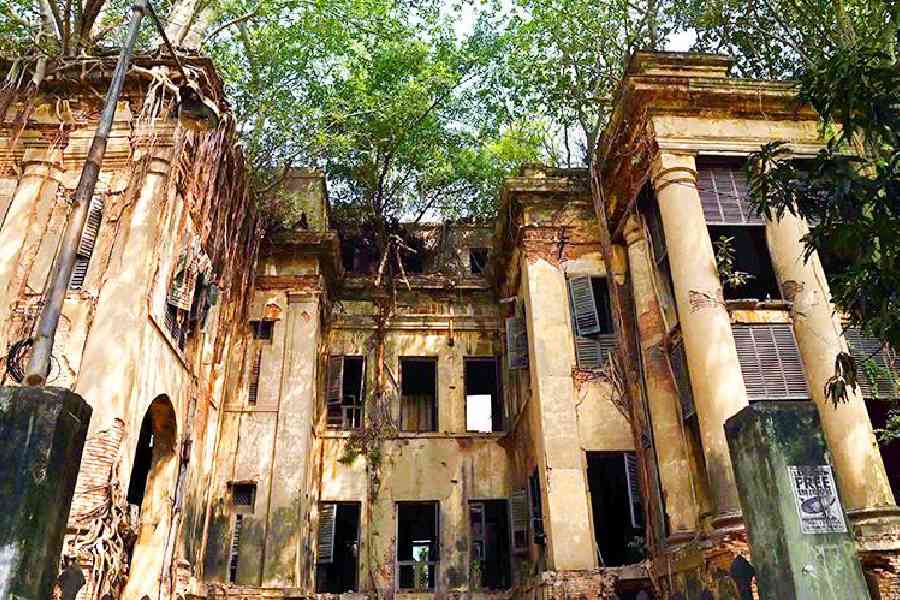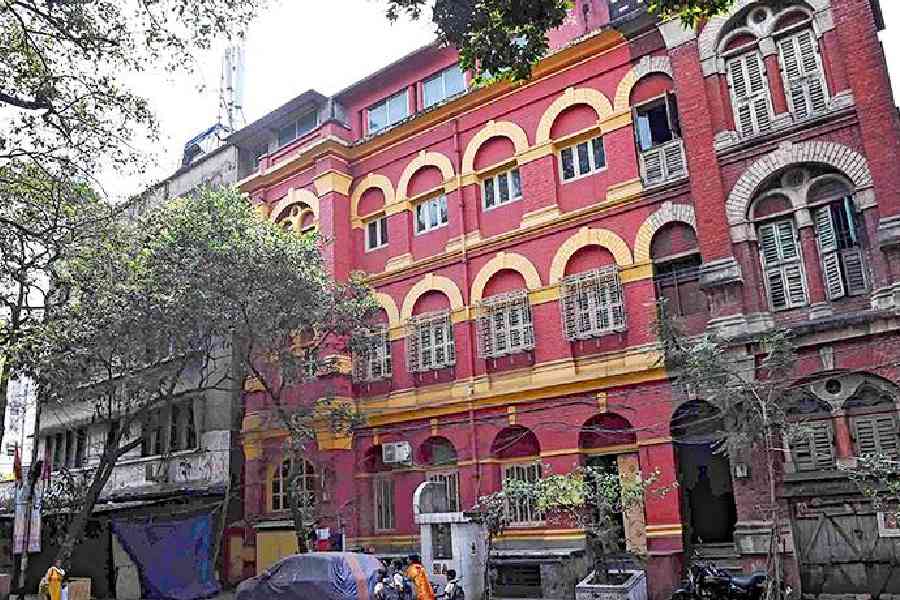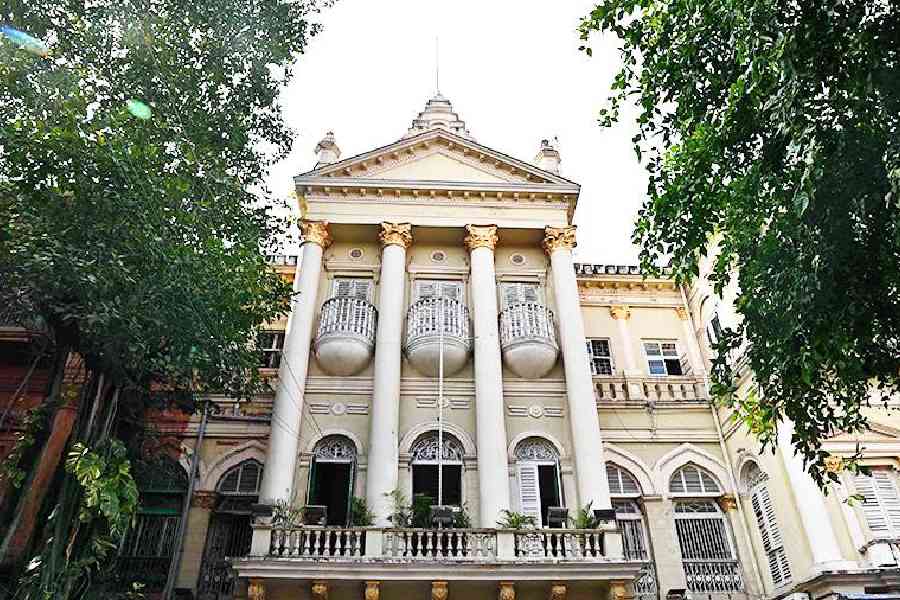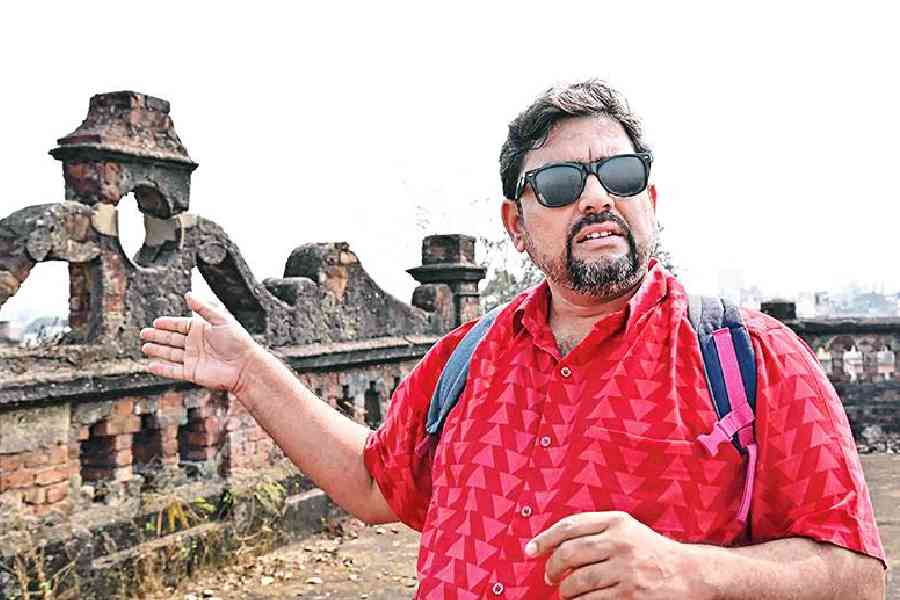The chipped paint peels like forgotten memories, revealing the intricate brick canvas beneath. A lone tree, its roots weaving through cracked walls, stands sentinel — a silent witness to the passage of time. These weren’t scenes from a movie but a glimpse we got, into the heart of north Calcutta. On a crisp Saturday morning last month, a group of five gathered outside the ABP office on Prafulla Sarkar Street. Their destination? Jorabagan Traffic Police Guard, to begin City Chronicles, a heritage walk organised by The Telegraph and led by Samrat Chowdhury, a heritage anthropologist. Unlike bustling crowds of tourists, this group sought a deeper connection, an exclusive journey through the labyrinthine lanes and forgotten whispers of the city’s past. t2 joined in on the walk as well! Glimpses from the memorable walk.

After a delicious breakfast of Litti Chokha, cookies and kesari tea near Sovabazar jetty, the group moved to their next stop, the old Duff College ruins. Although it now looks like a dilapidated old building lying on the side of the street, this was originally a college, established by Rev. Alexander Duff, the first Scottish missionary in India (and the guy who started Scottish Church College too!). Over the years, however, it has been used for all sorts of things and most recently, as the Jorabagan Police Station, which now operates from a newer facility behind the ruins. Despite its disrepair, hints of its former grandeur remain visible in the unique architectural details that stubbornly persist amidst the decay.

Right opposite Duff College is this gorgeous and unassuming red-andcream building. It is said that Suresh Chandra Chaudhuri had founded the East Bengal Club on August 1, 1920 on the second floor of this very house. A sign in front of the building details this history as well.

The next stop on the heritage trail was the house of Jadulal Mullick, the Shyambazar Mullick Bari. Also known as the ‘Cast Iron Palace’, the building doesn’t allow visitors usually inside the residential area. However, City Chronicles’ participants were in for a treat as they not only got to witness the intricate architecture inside but also learnt insights in a conversation with Rajat Mullick, a descendant of Jadulal Mullick. Cast iron designs are uniquely famous for their three dimensional quality, which is rare in other materials and it survives most prominently in Calcutta in the courtyard of this house. It also features a grand thakur dalan where the family takes turns to worship the family deity, elephant sculptures adorning the front gates, Tuscan columns and more, symbolising the opulence of the old Pathuriaghata traders.

It is hard to walk past Butto Kristo Paul’s medicine house without taking a moment to admire its magnificence. After all, it is a rare sight to see a medicine shop so intricate and beautiful. The entrance to this medical shop, which is most famous for Edward’s Tonic, is guarded by elephants. It has marble flooring and tall pillars supporting the high-ceilinged store, which operates even today. Although there is debate around the name of Edward’s Tonic, it is said that it is a potent cure for malaria and almost 32 other diseases. Butto Kristo Paul, the founder of the medicine shop, was also a revolutionary sympathiser and provided shelter and supplies to many revolutionaries during the Independence movement.

The Jorabagan Traffic Guard operates out of a grand heritage property, the former residence of Raja Janakinath Roy and his descendants (of the opulent Roy family of Bhagyakul, now in Bangladesh). The well-maintained building features winding wooden staircases, high ceilings with beams or kori barga, and majestic balustrade pillars. We were also shown to a small museum on the ground floor of the station where detailed information could be found on the heritage buildings in the area. And with that, the walk came to an end.

The day ended with a specially curated and delicious lunch at a Parsee restaurant. Starting off with the crispy and juicy Chicken Farcha (fried chicken with a fluffy and crispy outer layer), the first course also included Patrani Macchi which was very similar to the Bengali paturi. For the main course, there was light but flavoursome Parsi Pulao, Chicken Dhansak and Sali Mutton, ending with the nutty and creamy Lagan Nu Custard.
VOICES

“I found the heritage walk interesting from various perspectives. Not only were the people who organised it very friendly, charming, and cooperative but it was also extremely informative. It is nice to play tourist in your city once in a while because you learn so much more. What I particularly appreciated about the walk was that we were allowed into the personal spaces of the owners of the buildings,” said Ila Ghosh who was present with her husband Subhojit Ghosh.

“In the year 2008, I chanced upon a non-descript village in West Midnapore district, called Narajole. I was intrigued by the rich veritable treasure troves of its heritage ensemble, aesthetically built, architecturally brilliant and sustainable structures. What I realised was that this architectural heritage must be made relevant to the present society to make it an adaptive, reusable and sustainable entity rather than being mere white elephants. During the planning stage for this walk, I preferred not to get into any controversial incidents of the owners’ private life or style, instead focus on their contribution to society and the confluence of rich architecture present at these sites. And I chose this area and explored the lesser-known, hidden heritage gems of what understandably is the best heritage precinct of north Calcutta. As a heritage anthropologist, I always try to find the heritage roots of India/ Bengal/Calcutta through several efforts,” said Samrat Chowdhury, heritage anthropologist, who led this edition of City Chronicles.

With the assistance of officer Sunny Saha, from the Jorabagan Traffic Guard, everyone at City Chronicles was able to manoeuvre through the narrow and busy streets of the area with ease.
